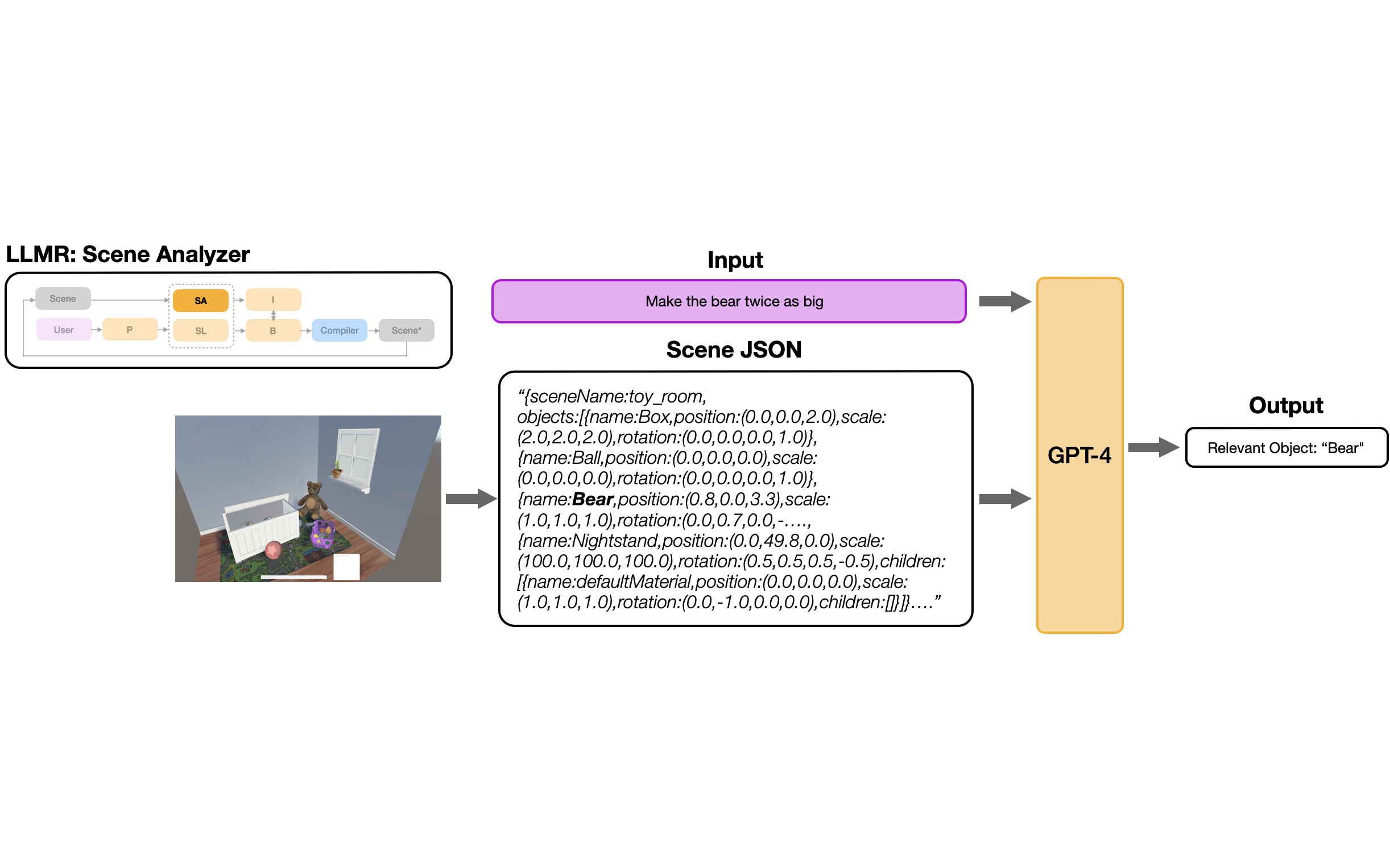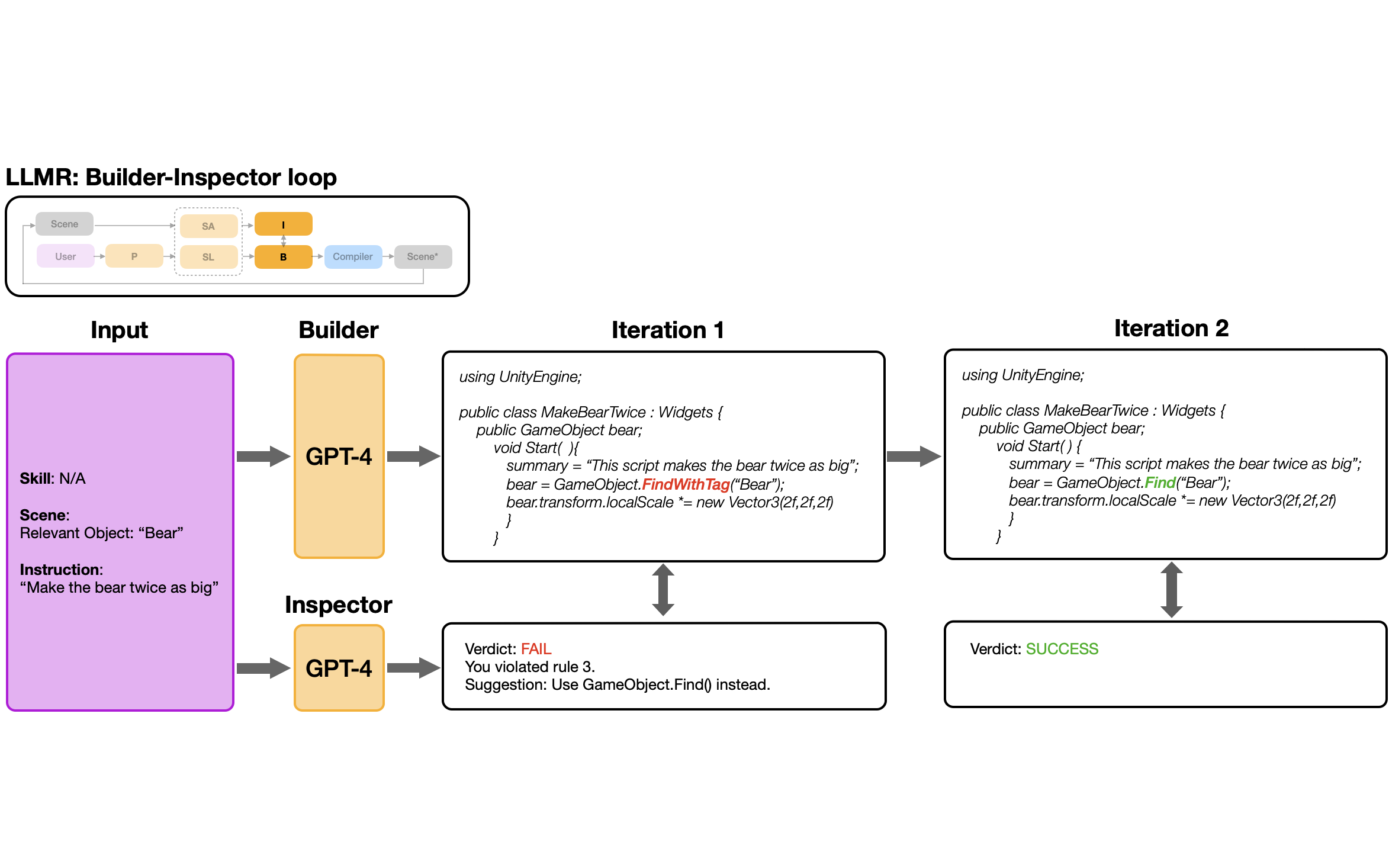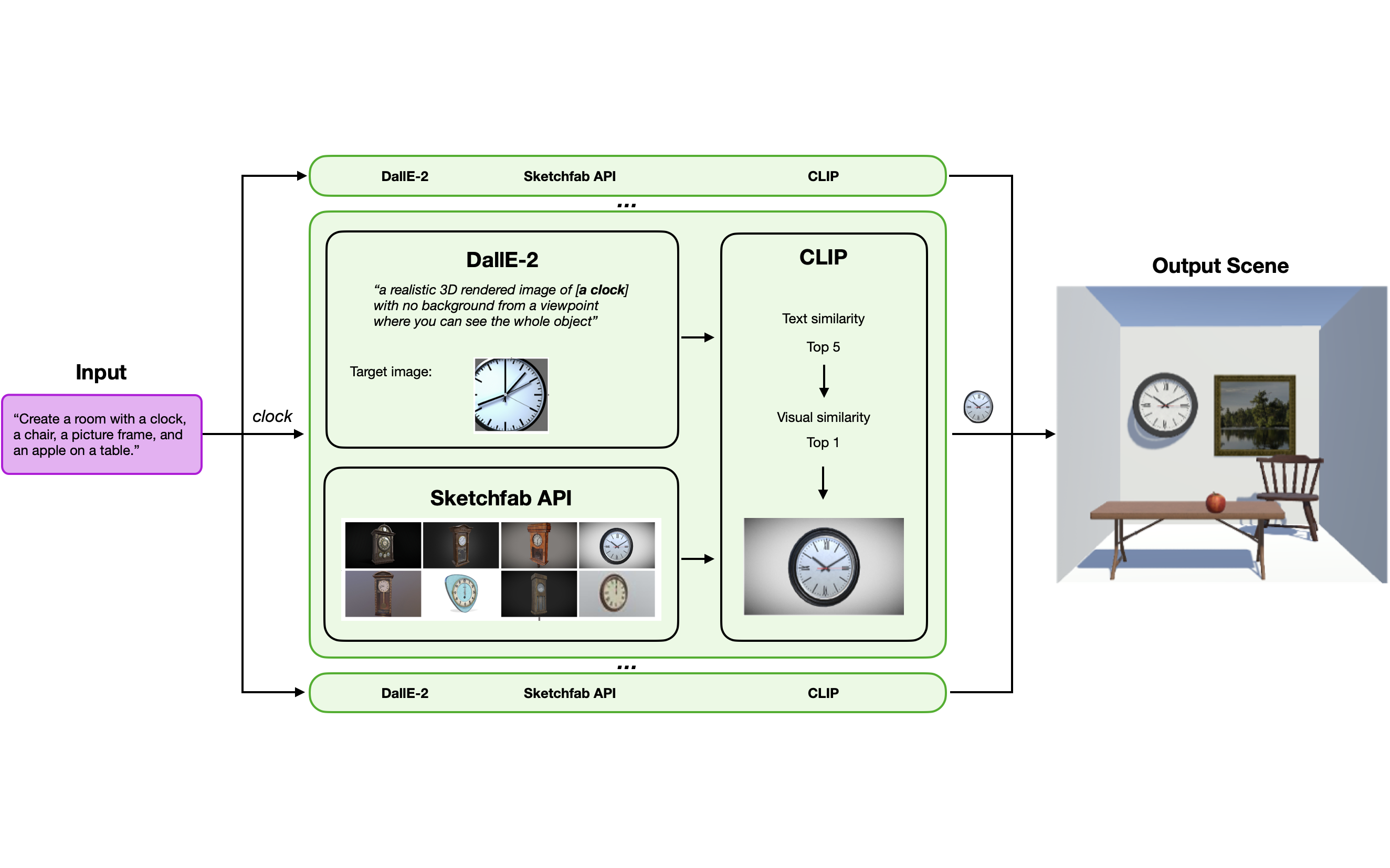BibTeX
@article{delatorre2023llmr,
title={LLMR: Real-time Prompting of Interactive Worlds using Large Language Models},
author={Fernanda De La Torre and Cathy Mengying Fang and Han Huang and Andrzej Banburski-Fahey and Judith Amores Fernandez and Jaron Lanier},
year={2023},
eprint={2309.12276},
archivePrefix={arXiv},
primaryClass={cs.HC}
}
@article{huang2023real,
title={Real-time Animation Generation and Control on Rigged Models via Large Language Models},
author={Huang, Han and De La Torre, Fernanda and Fang, Cathy Mengying and Banburski-Fahey, Andrzej and Amores, Judith and Lanier, Jaron},
journal={arXiv preprint arXiv:2310.17838},
year={2023}
}









